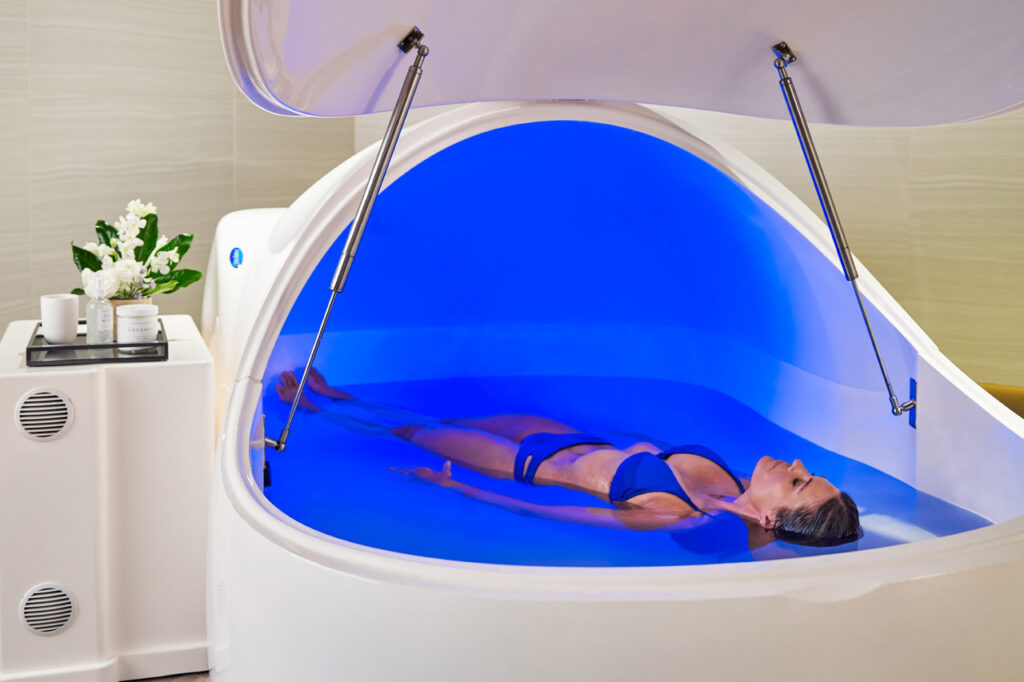
In our fast-paced and technology-driven world, finding moments of peace and relaxation can be a challenge. The constant bombardment of stimuli from screens, traffic, and daily responsibilities can leave us feeling overwhelmed and stressed. However, a unique and rejuvenating experience called sensory deprivation offers a chance to escape the noise and find tranquility like never before.
Welcome to the world of floating on cloud nine – the power of sensory deprivation through float tanks.
Understanding Sensory Deprivation and Float Tanks
Sensory deprivation is a therapeutic technique that involves reducing external stimuli to achieve a state of profound relaxation and mental clarity. One of the most popular ways to experience sensory deprivation is through float tanks, also known as isolation tanks or sensory deprivation tanks. These tanks are designed to create an environment of complete sensory isolation by immersing the body in a buoyant solution of water and Epsom salt.
Inside a float tank, you effortlessly float on the surface of the water, resembling the sensation of floating in outer space. The water is heated to skin temperature, making it barely distinguishable from the air around you. The tank is also enclosed in a sound and lightproof environment, eliminating sensory input from the outside world.
The Float Tank Experience
Before entering the float tank, you will be given instructions on how to make the most of the experience. After showering to remove any oils or lotions, you step into the tank and lie back, letting the salt-infused water effortlessly support your body. As you settle in, you’ll notice a feeling of weightlessness, free from the constraints of gravity. The tank door gently closes, and you’re enveloped in soothing darkness and silence.
At first, your mind may be active, processing the novelty of the experience. However, as your senses are deprived of external stimulation, your thoughts gradually subside. This state of relaxation leads to a deep sense of calm and peace.
The Benefits of Floating
Floating in a sensory deprivation tank in Orem offers a myriad of benefits for both the body and mind. One of the primary advantages is stress reduction. The absence of external stimuli allows the body to enter a state of deep relaxation, triggering the release of endorphins and reducing the levels of stress hormones like cortisol.
Additionally, floating has been found to alleviate physical tension and muscle soreness. The buoyant nature of the water relieves pressure on joints and muscles, providing a therapeutic effect for those suffering from chronic pain or injuries.
Float tanks are also known to be beneficial for improving sleep. The profound relaxation experienced during a float session can enhance sleep quality, making it an excellent option for those who struggle with insomnia or sleep disturbances.
Moreover, floating has shown promising results in reducing symptoms of anxiety and depression. The quiet and peaceful environment inside the tank allows individuals to connect with their inner thoughts and emotions, promoting emotional healing and self-awareness.
Floating for Mindfulness and Meditation
Floating in a sensory deprivation tank is ideal for mindfulness and meditation practices. In the absence of external distractions, it becomes easier to focus on the present moment and cultivate a state of mindfulness. Sensory isolation facilitates introspection, helping individuals gain a deeper understanding of their thoughts and emotions.
Many people find that their meditation practice is enhanced while floating. The state of deep relaxation and mental clarity achieved in the tank can lead to profound insights and moments of pure mindfulness.
Who Can Benefit from Floating?
Floating is a versatile practice suitable for people of all ages and walks of life. Athletes use floating for post-workout recovery and to enhance their mental focus. Individuals seeking relief from chronic pain or stress find solace in the tank’s comforting environment. Professionals looking to boost creativity and problem-solving abilities also turn to float for inspiration.
For pregnant women, floating offers a unique opportunity to experience weightlessness and relief from the physical strain of carrying a baby. Parents and caretakers can use the float tank as a form of respite, providing a space to decompress and recharge.
Tips for a Successful Floating Experience
To make the most of your floating experience, consider these tips:
- Prepare Mentally and Physically: Take time to relax your mind and body before entering the tank. Avoid caffeine or heavy meals that may interfere with relaxation.
- Manage Expectations: Everyone’s floating experience is unique. Embrace the journey and avoid setting specific expectations for your session.
- Post-Float Integration: After your float, take time to reintegrate into the outside world slowly. Journaling or reflecting on your experience can be helpful.
The Rise of Sensory Deprivation Centers
With the growing popularity of sensory deprivation and the positive impact of floating on overall well-being, sensory deprivation centers are emerging worldwide. These centers offer state-of-the-art float tanks and provide a supportive environment for individuals seeking tranquility and rejuvenation.
Conclusion
Floating on cloud nine in a sensory deprivation tank offers a rare opportunity to escape the noise and chaos of daily life and reconnect with ourselves. The profound relaxation, stress reduction, and mental clarity experienced during a float session make it a powerful tool for enhancing well-being. Whether you’re seeking physical relief or mental tranquility, sensory deprivation through float tanks unlocks a world of possibilities for nurturing the body and soul. So, why not embark on this transformative journey and discover the magic of floating for yourself?
Leave a Reply